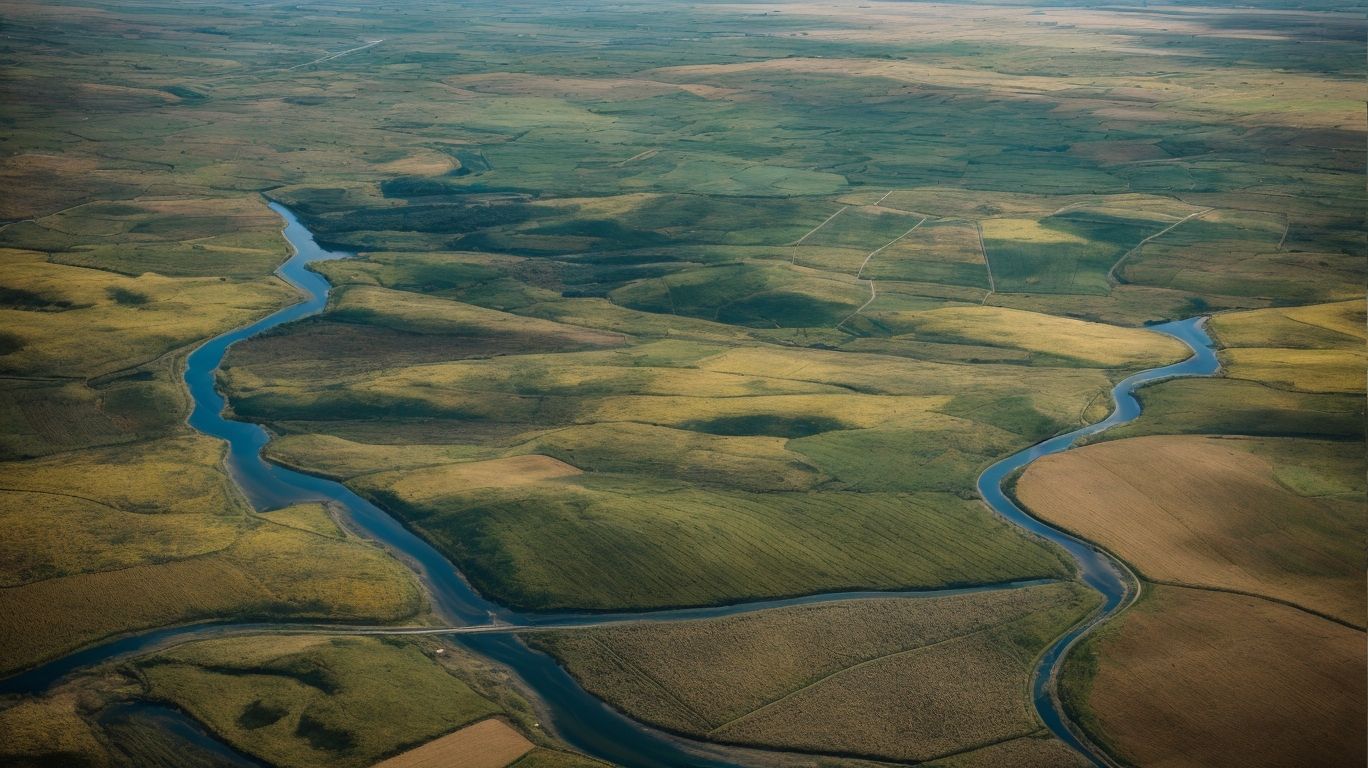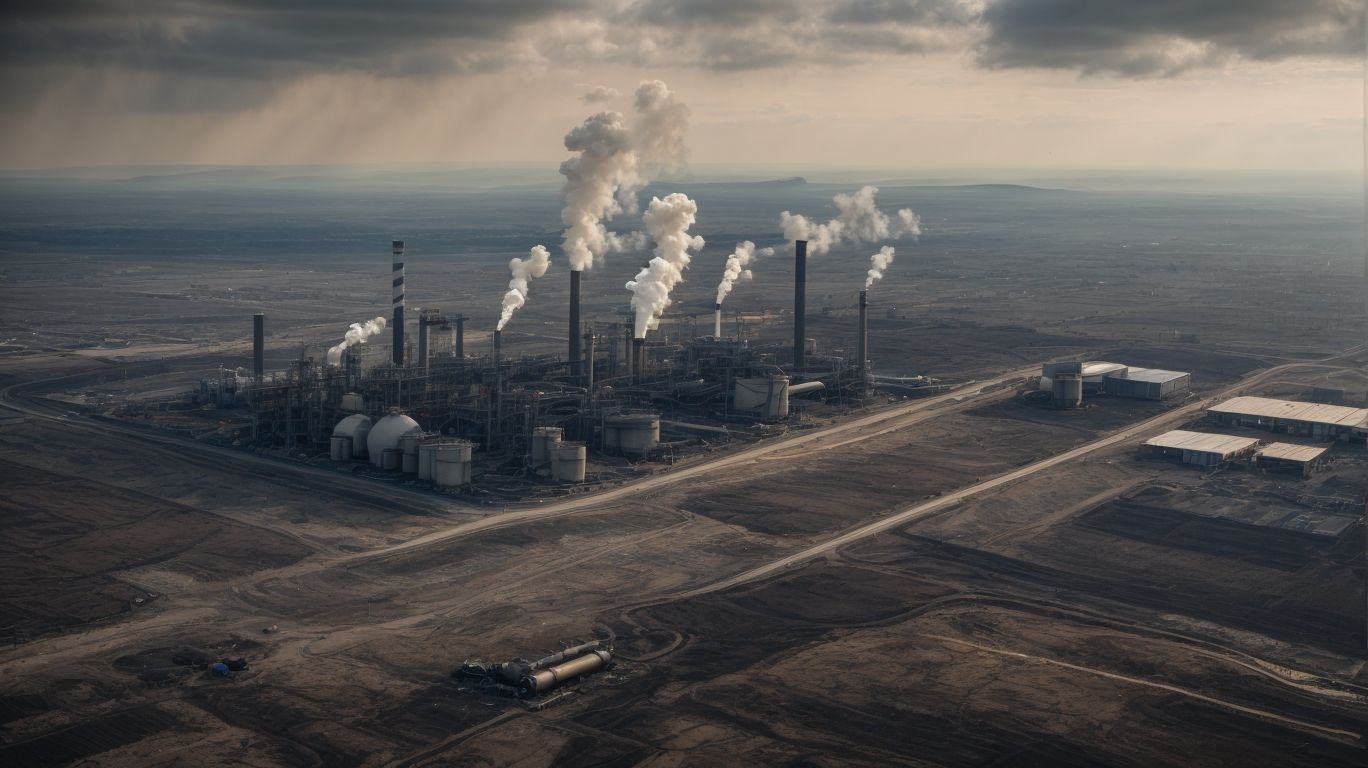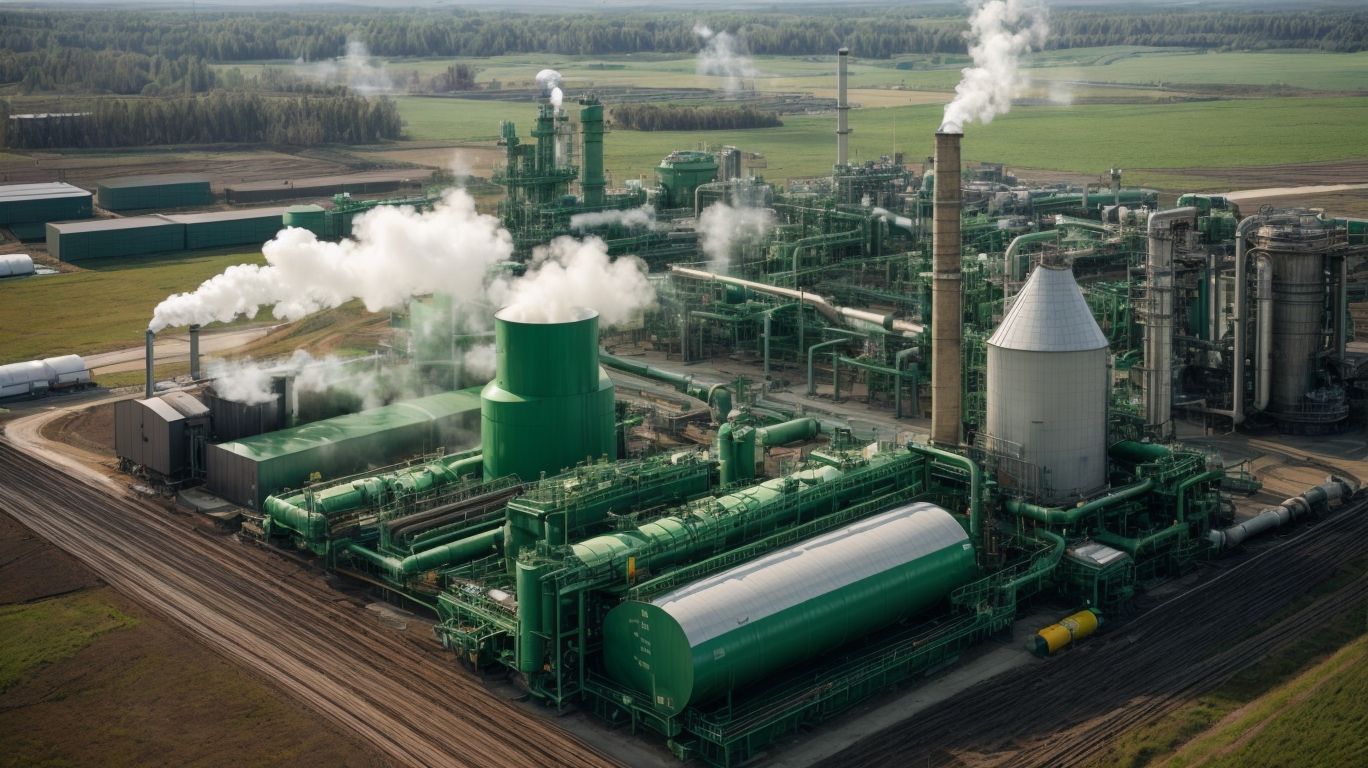Methane is a potent greenhouse gas that contributes significantly to climate change. It is a colorless and odorless gas that is produced naturally through various processes and is also emitted through human activities. Despite having a shorter lifespan in the atmosphere compared to other greenhouse gases, such as carbon dioxide, methane has a significant impact on global warming. In this article, we will take a deep dive into understanding the impact of methane on climate change.
Methane emissions come from both natural and human sources. Natural sources include wetlands, termites, oceans, and wildfires, while human activities such as fossil fuel production, agriculture, and waste management also contribute to methane emissions. According to a study published in the journal Nature, the majority of methane emissions come from human activities, indicating the potential for intervention to reduce these emissions.
The effects of methane on the environment are multifaceted. It contributes to the enhanced greenhouse effect, leading to higher temperatures on Earth, which causes numerous consequences such as sea-level rise, extreme weather events, and loss of biodiversity. Methane also contributes to ozone depletion, which can have harmful effects on human health and the environment, as well as ocean acidification, which disrupts marine ecosystems.
Compared to other greenhouse gases, methane has a higher global warming potential, meaning it has a more significant impact on climate change. However, it has a shorter lifespan in the atmosphere, which can be attributed to the natural processes that break it down. Currently, methane levels in the atmosphere are at an all-time high, with approximately 1,868 parts per billion, according to data from the National Oceanic and Atmospheric Administration (NOAA).
Efforts are being made to reduce methane emissions globally. Regulations on fossil fuel production, such as leak detection and repair programs, have been implemented to reduce methane emissions from the oil and gas industry. Methane capture and use technologies have also been developed to utilize methane from waste management and agriculture, turning it into a source of energy. Additionally, changes in agricultural practices, such as reducing the use of fertilizers, can also help decrease methane emissions.
Individuals can also play a role in reducing methane emissions by making small changes in their daily lives. Simple actions like reducing food waste, choosing plant-based foods, and properly disposing of waste can help reduce methane emissions. Making more significant lifestyle changes, such as using public transportation or switching to renewable energy sources, can also have a positive impact in reducing methane emissions.
In conclusion, understanding the impact of methane on climate change is crucial in implementing effective measures to reduce its emissions. By addressing the sources of methane emissions and taking action at both individual and global levels, we can help mitigate the effects of this potent greenhouse gas on our planet.
Key Takeaways:
What is Methane and How Does It Contribute to Climate Change?

Photo Credits: Chemicalglossary.Net by Larry Wilson
Methane is a powerful greenhouse gas that plays a significant role in climate change. It is created through both natural processes, such as the breakdown of organic matter, and human activities like extracting fossil fuels and agricultural practices.
Despite having a shorter lifespan in the atmosphere than carbon dioxide, methane has a much greater warming potential. It is responsible for approximately 16% of global greenhouse gas emissions, making it a crucial target for reduction in order to mitigate the effects of climate change.
Strategies for reducing methane emissions include:
- Improving waste management
- Preventing leaks from oil and gas operations
- Implementing more sustainable methods in agriculture
What Are the Sources of Methane Emissions?

Photo Credits: Chemicalglossary.Net by Stephen Wright
As a potent greenhouse gas, methane has been identified as a major contributor to climate change. But where does all this methane come from? In this section, we will take a closer look at the sources of methane emissions. From natural sources to human activities, we will explore the various ways in which methane is released into the atmosphere and its impact on our planet. By understanding the sources of methane, we can better comprehend the urgency of addressing this pressing environmental issue.
1. Natural Sources
Natural sources of methane emissions play a significant role in the overall levels of this potent greenhouse gas in the atmosphere. These sources include:
- Wetlands: These areas have oxygen-deprived conditions that facilitate the production of methane by certain bacteria.
- Termites: These insects produce methane as a byproduct of their digestion process.
- Oceans: Methane can be released from the seabed due to the decomposition of organic matter.
- Wildfires: Burning vegetation can release methane stored in the biomass.
One true story highlighting the impact of natural methane emissions is the case of methane seeps in the Arctic. These seeps release large amounts of methane, contributing to the acceleration of climate change.
2. Human Activities
Human activities contribute significantly to methane emissions, exacerbating climate change. Here are some key sources of anthropogenic methane emissions:
- Agriculture: Livestock farming, particularly enteric fermentation in cattle, leads to methane release.
- Energy production: Extraction, transport, and use of fossil fuels like coal, oil, and natural gas result in methane leakage.
- Waste management: Improper disposal of organic waste in landfills produces methane through anaerobic decomposition.
- Coal mining: Methane, a byproduct of coal mining, is released during mining operations.
- Rice cultivation: Flooding of rice paddies creates an anaerobic environment that generates methane.
These activities highlight the need for targeted measures to reduce methane emissions and mitigate their impact on climate change.
What Are the Effects of Methane on the Environment?

Photo Credits: Chemicalglossary.Net by Ethan Jones
Methane is a potent greenhouse gas that significantly contributes to climate change. In this section, we will take a closer look at the impact of methane on the environment. Through exploring the various effects of methane, such as the greenhouse gas effect, ozone depletion, and ocean acidification, we can better understand the role of this gas in shaping our planet’s climate. By gaining a deeper understanding of these effects, we can also explore potential solutions to mitigate the negative impact of methane on our environment.
1. Greenhouse Gas Effect
The greenhouse gas effect of methane contributes significantly to climate change. To mitigate this impact, several steps can be taken:
- Reducing methane emissions from natural sources, such as wetlands, through conservation efforts and land management practices.
- Implementing stricter regulations on human activities that contribute to methane emissions, such as fossil fuel production, industrial processes, and waste management.
- Encouraging the capture and use of methane, such as through methane capture projects in landfills and wastewater treatment facilities.
- Promoting changes in agricultural practices, such as improving livestock management and reducing the use of synthetic fertilizers.
- Raising awareness and educating individuals about the greenhouse gas effect and the importance of reducing methane emissions. This can include providing tips on how to minimize personal contributions, such as reducing food waste and using energy-efficient appliances.
2. Ozone Depletion
Ozone depletion is one of the consequences of methane on the environment. Methane can play a role in the destruction of the ozone layer, which serves as a shield against harmful UV radiation. Upon entering the atmosphere, methane reacts with chlorine and bromine compounds, resulting in the depletion of ozone molecules. This thinning of the ozone layer allows for more UV radiation to reach the Earth’s surface, increasing the risk of skin cancer, cataracts, and other health problems. It is crucial to decrease methane emissions in order to mitigate the detrimental effects of ozone depletion and safeguard the ozone layer.
3. Ocean Acidification
Ocean acidification is a consequence of increased carbon dioxide levels in the atmosphere, which leads to the absorption of CO2 by the oceans. This process reduces the pH of seawater, making it more acidic. The impacts of ocean acidification are significant and include:
- Impaired shell formation: Acidic conditions make it harder for marine organisms like corals, shellfish, and mollusks to build and maintain their shells and skeletons.
- Disruption of marine food chains: Acidification affects the growth and survival of phytoplankton and zooplankton, which are the foundation of marine food webs.
- Coral reef decline: Coral reefs are highly vulnerable to ocean acidification. The increased acidity hinders coral growth and weakens their overall resilience to other stressors.
- Biodiversity loss: Acidification can lead to the loss of species diversity as many marine organisms struggle to adapt to the changing conditions.
Addressing ocean acidification requires reducing carbon dioxide emissions and adopting sustainable practices to protect marine ecosystems.
How Does Methane Compare to Other Greenhouse Gases?

Photo Credits: Chemicalglossary.Net by Carl White
As we continue to study and address the issue of climate change, it is important to understand the role of different greenhouse gases in contributing to this global crisis. In this section, we will take a deep dive into the specific properties of methane and compare it to other greenhouse gases. By examining its global warming potential and lifetime in the atmosphere, we can gain a better understanding of the impact of methane on climate change.
1. Global Warming Potential
The global warming potential (GWP) is a measure of the impact a greenhouse gas has on global warming compared to carbon dioxide over a specific timeframe. Here are some key steps being taken to address the GWP of methane emissions:
- Regulations on Fossil Fuel Production: Implementing stricter regulations on methane emissions from oil and gas operations to minimize leaks and venting.
- Methane Capture and Use: Encouraging the capture and utilization of methane emissions from landfills, wastewater treatment plants, and agricultural operations.
- Changes in Agricultural Practices: Promoting the adoption of practices that reduce methane emissions from livestock, such as improved manure management and dietary changes.
Individuals can also help reduce methane emissions by supporting renewable energy, reducing food waste, and making sustainable choices in their daily lives.
2. Lifetime in the Atmosphere
The lifespan of methane in the atmosphere is relatively short compared to other greenhouse gases, such as carbon dioxide. On average, methane only lasts for approximately 9-15 years before breaking down into carbon dioxide and water vapor. However, despite its shorter lifespan, methane has a much higher warming potential per unit compared to carbon dioxide. This means that even though it may not remain in the atmosphere for as long as carbon dioxide, it has a more significant impact on climate change. Understanding the lifetime of methane is crucial in developing effective strategies to reduce its emissions and mitigate its effects on our planet.
In 1978, scientists made a significant discovery when they noticed a sudden spike in methane levels in the atmosphere. After years of research, they identified the source as massive methane releases from fossil fuel extraction and agricultural practices. Recognizing the urgent need to address this issue, international regulations were implemented to limit methane emissions. Technologies for capturing and utilizing methane were also developed, and farmers adopted more sustainable agricultural practices. As a result, methane levels in the atmosphere began to decrease, leading to a significant reduction in its impact on climate change. This success story serves as a reminder of the importance of taking proactive steps to address environmental challenges.
What Are the Current Levels of Methane in the Atmosphere?

Photo Credits: Chemicalglossary.Net by Wayne Anderson
Currently, the atmospheric levels of methane are at a significantly higher level than in previous decades. Recent studies have shown that methane concentrations have reached a record high of 1,875 parts per billion (ppb), which is more than two and a half times higher than the levels before the industrial era. These elevated levels of methane have contributed to the ongoing global warming and climate change.
The increase in methane is primarily caused by human activities such as agriculture, fossil fuel extraction, and waste management. It is crucial to make efforts to reduce methane emissions in order to mitigate the impacts of climate change.
What Steps are Being Taken to Reduce Methane Emissions?

Photo Credits: Chemicalglossary.Net by Douglas Roberts
As the effects of climate change become increasingly apparent, the need to reduce greenhouse gas emissions becomes more urgent. In this section, we will take a closer look at the steps being taken to reduce methane emissions, one of the most potent contributors to global warming. From government regulations on fossil fuel production to innovative methods of methane capture and use, we will examine the various approaches being implemented. We will also explore how changes in agricultural practices can play a significant role in reducing methane emissions and mitigating the effects of climate change.
1. Regulations on Fossil Fuel Production
Regulations on the production of fossil fuels play a crucial role in reducing methane emissions and mitigating the effects of climate change. Here are some steps that have been taken to regulate fossil fuel production:
- Implementing stricter emission standards for oil and gas operations.
- Requiring operators to regularly monitor and report methane leaks.
- Encouraging the use of advanced technologies, such as leak detection and repair programs, to reduce methane emissions.
- Enforcing penalties and fines for non-compliance with methane emission regulations.
- Investing in research and development of cleaner energy alternatives to decrease dependence on fossil fuels.
These regulations aim to limit methane emissions from the extraction, processing, and transportation of fossil fuels, ultimately contributing to a sustainable and greener future.
2. Methane Capture and Use
Methane capture and use is a crucial strategy in reducing methane emissions and combating climate change. Here are some steps that can be taken:
- Capture at the source: Implement technologies to capture methane emissions from landfills, livestock operations, and natural gas facilities.
- Utilize as energy: Convert captured methane into usable energy, such as electricity or heat, to decrease reliance on fossil fuels.
- Upgrade infrastructure: Invest in infrastructure upgrades to prevent methane leaks during production, storage, and transportation.
- Promote biogas production: Encourage the production of biogas from organic waste, such as agricultural byproducts or wastewater, as a renewable energy source.
- Support research and innovation: Invest in research and development to enhance methane capture technologies and explore new applications for methane use.
3. Changes in Agricultural Practices
Changes in agricultural practices are crucial for reducing methane emissions. To achieve this, the following steps can be taken:
- Improved livestock management: Implementation of practices such as rotational grazing and proper waste management can effectively minimize methane emissions from livestock.
- Efficient fertilizer use: Targeted application of fertilizers can greatly reduce methane emissions from agricultural soils.
- Alternative rice cultivation techniques: Utilizing intermittent flooding and incorporating organic matter in rice fields can significantly decrease methane emissions.
- Cover crops: Planting cover crops during fallow periods promotes soil health and helps to reduce methane emissions.
- Manure management: Properly managing and treating manure can prevent methane emissions from agricultural waste.
What Can Individuals Do to Help Reduce Methane Emissions?

Photo Credits: Chemicalglossary.Net by Matthew Walker
Individuals can play a crucial role in reducing methane emissions and mitigating climate change. Here are some actions individuals can take:
- Reduce meat consumption: Livestock production is a significant source of methane emissions. Choosing plant-based options or reducing meat consumption can effectively lower methane emissions.
- Minimize food waste: When food waste decomposes in landfills, it produces methane. By reducing food waste through better meal planning and composting, individuals can help reduce methane emissions.
- Support renewable energy: Transitioning to renewable energy sources like solar or wind power reduces reliance on fossil fuels, which contribute to methane emissions during extraction and combustion.
- Use energy efficiently: Conserving energy at home by using energy-efficient appliances, insulating homes, and turning off lights can reduce the demand for fossil fuel-based energy production and subsequently lower methane emissions.
- Advocate for policy changes: Individuals can raise awareness and support policies that aim to regulate and reduce methane emissions. This can include advocating for stricter regulations on methane leaks from oil and gas operations or supporting initiatives encouraging renewable energy adoption.
By taking these individual actions, we can collectively make a significant impact in reducing methane emissions and combating climate change.
Frequently Asked Questions
What is the role of methane in climate change?
Methane is a potent greenhouse gas that has a warming power much higher than carbon dioxide in the short term. It is responsible for at least 25% of current global warming, making it a critical contributor to climate change.
Why is reducing methane emissions important?
Reducing methane emissions is crucial in mitigating the impacts of climate change, such as extreme weather, rising sea levels, and crop loss. It is also a necessary step in limiting global warming to 1.5°C, as outlined in the Paris Climate Change Agreement.
What are some key sources of methane emissions?
Human activities, such as agriculture and fossil fuel production, are the main sources of methane emissions. Livestock, paddy rice cultivation, and oil and gas facilities are among the top contributors to methane pollution.
How can we reduce methane emissions?
There are concrete actions that can be taken to reduce methane emissions, such as using alternative types of feed for livestock, implementing more efficient manure management practices, and shifting towards plant-rich diets. Additionally, covering manure, composting it, and using it to produce biogas can also help reduce emissions.
What is the role of government and policymakers in reducing methane emissions?
Governments and policymakers play a crucial role in implementing critical protections and regulations to reduce methane emissions. President Biden has signed a bill to reinstate Obama-era rules that limit methane pollution from the oil and gas industry, and the EPA is working on implementing even more ambitious methane safeguards.
Is there a way for individuals to take action against methane emissions?
Individuals can also play a part in reducing methane emissions by advocating for concrete methane action plans and supporting alternative sources of energy. Additionally, individuals can make choices in their daily lives, such as consuming less animal protein and supporting plant-rich diets, to help reduce methane emissions.
